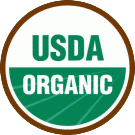Order products!
About our farm
Farm blog
Why grass fed?
Why organic?
Why soy-free?
Why eat local?
Our difference
FAQ's
Bone broth
Organic chicken
Organic eggs
Organic pork
Frozen is Fresher
Testimonials
Recipes
Contact us

From our family to yours...
We are a 100%-owned family farm, so you can rest assured that everything that bears our name is produced on our farm with the greatest attention to every detail.
You see, we truly care about the health of our family, and we care about yours too.
Our mission is to provide families with truly healthy meat.

Farm Blog
Posted by: Trevor
January 9, 2012
One of the things about pigs is that almost every part of the animal is edible. But more importantly, certain parts are very nutrient-dense. Such is the pig's head --- an incredible source of naturally-occurring gelatin and various other nutrients.
Although our great-grandparents ate this sort of food regularly, it's a bit unusual nowadays. Too bad, because modern diets that focus on muscle-meats only, but shun the organ meats and fat, are not only nutrient-deficient but also missing out on some of life's common pleasantries.
The gelatin from a pig's head is very high in the amino acid glycine, which scientists say is very useful for our bodies. They say that glycine can convert toxic substances in our bodies into harmless forms which are then excreted. They also say that it may promote better sleep, help with attention and memory, and boost our immune systems. They say that gelatin, in general, promotes joint health.
We can't prove any of those things, but we do know that most cultures around the world have historically eaten pig’s head, making it into a dish that we know as "headcheese". From China to Korea to Vietnam to Russia to Poland to Italy to France to England to... The list covers dozens of countries.
The dish itself goes by different names --- sulze, presskopf, salceson, pyeonyuk, giothu, brawn --- but in the end, it's still pig's head.
This traditional food, eaten by the majority of the world's nations for hundreds of years, is now largely abandoned, at least in North America. It's time for a headcheese revival.
But not just any pig's head will do. No, we need an organic pig's head, from a healthy outdoor pig. Example here.
A pig's head may not be pretty to look at, but it has its own special charm, as the following picture demonstrates.

This is the head from one of our healthy, organic, outdoor pigs. He lived a happy life.
When we slaughter our pigs and have them cut & wrapped, we usually make sure the heads are cut in half (lengthwise).
Still, the head is rather large, so to cook it you will need a large pot. We prefer a slow-cooker. Even so, we had to cut the head up to make it fit.

Placing the head in a slow-cooker is an easy way to prepare it.
At this point, we added water until it covered the pig's head. Then we added a few ingredients of our own choosing --- for us, we added garlic cloves, carrots, celery, and leeks. And bay leaves.
Some people add all kinds of different spices or vegetables. Remember, you are not just cooking the pig's head but also making a broth which you will use later in the process, so adding the spices and vegetables is something you'll probably want to do.

Adding some vegetables and herbs such as garlic and bay leaf will improve the flavor.
Now we turn the slow-cooker on to around 200 degrees and just leave it for a few hours. Stir the mixture from time to time. Within 3 to 6 hours the meat will be thoroughly cooked and fall off the bone. At that point, turn off the slow-cooker and allow things to cool down enough so you can remove the meat from the mixture (making sure to remove any bits of meat that are still clinging to the bone).
Let the meat cool on a cutting board, and then cut up into small bits (don't worry if you've got some vegetable bits mixed in with the meat, that's fine).
Meanwhile, as you're cutting the meat up, turn the slow-cooker back on and continue to cook the bones and the broth --- the longer you do this, the more gelatin will be released from the bone. At least another 4 hours, although going longer is fine, just don't let the broth evaporate too much, since you'll need it later.
By the way, to increase the gelatin content of the recipe, some people add pig's feet --- they are loaded with gelatin. We didn't do that here, but many people do.
Now, place the meat you've diced into a meatloaf-style dish, like this.

Now it's time to place the meat once it's diced into a meatloaf-style dish.
Meanwhile, the bones and broth will keep going for a few hours.
Finally, turn off the slow-cooker, and strain the broth out and pour it into a measuring cup. Pour the broth over the meat until it barely covers the whole lot. Place in the refrigerator for several hours, and it should set, as the gelatin congeals (if it doesn't set well, it means there wasn't enough gelatin released from the bones --- one reason that some people add pig's feet).

The headcheese is now ready. We could've had more gelatin if we'd added pig's feet.
Now it's ready. Ours is rather bland, tasting a bit like cold bits of pulled-pork in a jelly. Some would serve it alone, on toast, or on crackers (as we did). However, for those of you with a more culinary bent, you may want to try a stronger mix of herbs to give a stronger flavor (there are more recipes for headcheese than I had imagined).
If any of you would like to try making this dish, you can order a delicious healthy pig's head here.
Other Farm Blog Posts



